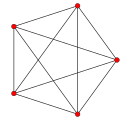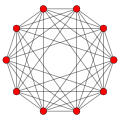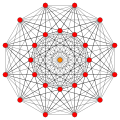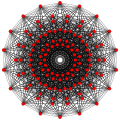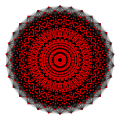This article includes a list of references, related reading, or external links, but its sources remain unclear because it lacks inline citations .(July 2025) |
| 251 honeycomb | |
|---|---|
| (No image) | |
| Type | Uniform tessellation |
| Family | 2k1 polytope |
| Schläfli symbol | {3,3,35,1} |
| Coxeter symbol | 251 |
| Coxeter-Dynkin diagram | |
| 8-face types | 241 {37} |
| 7-face types | 231 {36} |
| 6-face types | 221 {35} |
| 5-face types | 211 {34} |
| 4-face type | {33} |
| Cells | {32} |
| Faces | {3} |
| Vertex figure | 151 |
| Edge figure | 051 |
| Coxeter group | , [35,2,1] |
In 8-dimensional geometry, the 251 honeycomb is a space-filling uniform tessellation. It is composed of 241 polytope and 8-simplex facets arranged in an 8-demicube vertex figure. It is the final figure in the 2k1 family.



